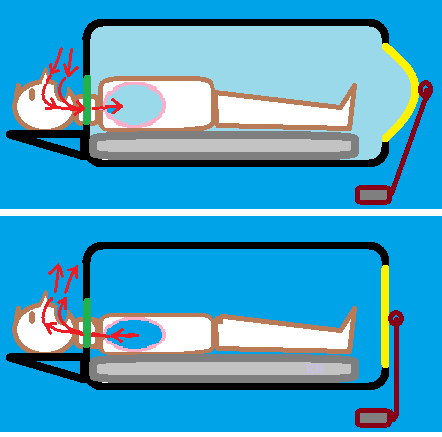Iron Lung
An antique way to save people from reparatory paralysis

image source https://en.wikipedia.org/wiki/Iron_lung#/media/File:Iron_lung_action_diagrams.png
The Iron Lung was a respirator device created in 1927 by Philip Drinker and Louis Agassiz Shaw that was used mainly to treat people who suffered from severe polio and couldn’t breathe on their own. Before the vaccine for polio was created, one in every two hundred people who got polio suffered from paralysis. Most people who were affected by polio were age five and younger. About 5-10% of those who suffered from paralysis died because they could not breathe. Iron lungs are negative-pressure ventilators created by a vacuum pump. The negative pressure would expand the patient’s chest to take in air, and when the vacuum stopped, the chest would deflate, letting air out. On average, people spent a few weeks in an iron lung before recovering to breathe on their own. They were very expensive when they were first invented, costing about the price of a home in the 1930’s. Later, an inventor named John Emerson improved on the first version of the iron lung by making it more lightweight, reliable, and cheap. It also had a sliding bed called a “cookie tray” and ports that allowed easier access for people to tend to the patients. In 1953, the polio vaccine was created by Dr. Jonas Salk and reduced the use of iron lungs. There are currently only three people who still use one today.
Related Stories:
- https://www.pfizer.com/news/articles/flashback_iron_lung
- https://www.medscape.com/answers/304068-104770/what-is-the-background-of-the-iron-lung-form-of-mechanical-ventilation
- https://americanhistory.si.edu/polio
- https://www.history.com/this-day-in-history/salk-announces-polio-vaccine#:~:text=On%20March%2026%2C%201953%2C%20American,the%20crippling%20disease%20of%20polio.
- https://www.newsweek.com/how-does-iron-lung-work-polio-survivor-last-us-1083104#:~:text=The%20machinery%20features%20pressurized%20cylinders,visually%20synonymous%20with%20the%20virus.










